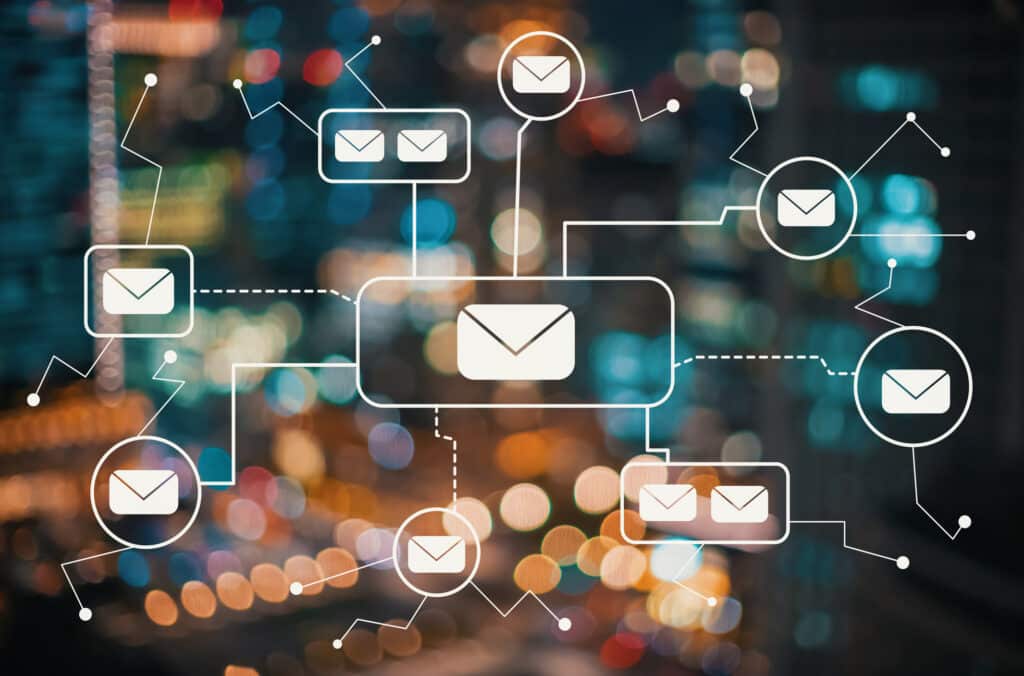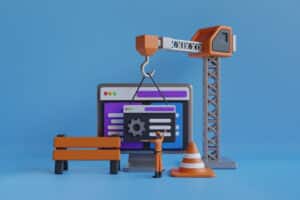Are you looking for ways to generate more marketing-qualified leads and long-term customer relationships? Email automation is a great means of doing so, and using automated email triggers can make that process easier and more effective. Let’s review how you can craft personalized messages that drive engagement and business growth.
Start by Reviewing the Emails You Already Automate
If you send marketing emails of any kind — from cold emails to content blasts — chances are that you already automate them. Otherwise, you simply wouldn’t be able to keep up with the sheer volume you would need to send to your leads and existing customers.
At a minimum, automating your emails requires scheduling when those campaigns will launch, and which lists of contacts they’ll be sent to. But there are plenty of email series you could potentially create that are more involved and based on the specific actions that your leads take. Here are some of the most common automated email triggers you can create for lead and customer interactions, separated by B2B and B2C.
B2B Automated Email Triggers for Leads
Lead Nurturing
Lead nurturing emails are sent when your marketing contacts have achieved a certain lead score by opening enough of your past marketing emails, clicking on specific links, and/or viewing pages on your website.
These emails typically a) include additional material related to what your leads were already engaging with, and b) convey the message, “We noticed your interest in this topic, so we’re sharing information we also think you will find valuable.” This could include in-depth content like case studies or ebooks.
Content Download
When a contact downloads a piece of content like an ebook, whitepaper, report, or other form of lead magnet, this action can trigger an email that thanks them and suggests other relevant content or actions they can take.
For instance, if a lead downloads a white paper from a tech company about a new piece of software, that company’s content download email might include a prompt that asks the lead if they’d like to register for a free trial.
Trial Activation and Onboarding
You can also set up trigger emails that send to customers when a trial is activated for a product or service. These may be followed by a series of emails that guide the user through initial setup, highlight key features, and provide tips to maximize the experience during their trial period.
It’s also a good idea to schedule emails that go out to leads when their trials are about to expire, and that outline what pricing they can expect if they decide to continue service.
Product or Service Announcements
When new products, features, or services of yours are released, you can trigger emails that inform your contacts about them and the problems they solve.
Abandoned Form Fills
If a contact starts to fill out a form on your website but doesn’t complete it, trigger an email that reminds them. This could be for demo requests, quote inquiries, or to schedule a discovery call to talk about their needs.
Cross-Sell or Upsell Emails
Maximize the lifetime value of your customers by triggering cross-sell or upsell emails based on their purchase history and browsing behavior. Recommending complementary or upgraded products can generate repeat business.
Gated Content Follow-Up
Should you decide to offer gated content, make sure to send follow-up emails related to that content once it’s been accessed. These messages keep your contacts engaged and encourage them to explore your company’s offerings further.
Event or Webinar Invitations
Some businesses see success by hosting periodic webinars. These webinars help them demonstrate their industry knowledge and value to persuade leads to partner with them.
Should you choose to use webinars, you can drive attendance and engagement by triggering automated email invitations. Provide event details, registration links, and reminders that encourage attendance and participation.
Post-Event Follow-Up
After a webinar, send follow-up emails to your attendees that thank them for participating. You may also choose to include a summary of key points, a recording of the event, and additional resources that relate to the topic you discussed. It’s also a good time to suggest next steps, like offering a call with your sales team.
Satisfaction and Referral Invitations
You may decide to periodically email your current clients to confirm that they’re satisfied with your services. Those who are can also be prompted to refer your business to others in their market who they may think could benefit from your expertise.
Include details about any referral incentives or programs you have in place.
Renewal Reminders
For subscription-based businesses or products with expiration dates, trigger renewal reminders to prompt your customers to review their subscriptions or reorders. By sending timely reminders, you can streamline the renewal process and minimize any last-minute attrition.
B2C Automated Email Triggers for Customers
Welcome Emails
Sending a well-crafted welcome email to new subscribers sets the tone for your brand and establishes its value. When someone signs up for your mailing list, use this opportunity to provide an expanded introduction on the benefits they receive by partnering with your business.
The value you provide can be personalized based on how you let your customers subscribe. For instance, you may have a form on your website for leads to fill out that lets them explain the types of products or services they’re looking for. Their answers will help you understand what emails and content they should receive.
Abandoned Cart Emails
Cart abandonment is a common challenge for online retailers that email can help reduce. An automated email can be triggered to send to a customer who fails to complete a purchase, or leaves items pending in their cart for a specific amount of time. This gentle reminder can encourage more conversions.
Order Confirmation Emails
After a successful transaction, give your customers peace of mind by sending a timely order confirmation email. Include details like their order summaries, shipping information, and estimated delivery dates to enhance their shopping experience and offer greater transparency.
Shipping Confirmation Emails
Keep customers informed about when their orders have finally shipped. Include tracking information and personalized messages based on what they purchased to create a sense of anticipation.
Post-Purchase Follow-Up Emails
The relationship with your customers shouldn’t end after the sale. Use post-purchase follow-up emails to express gratitude, gather feedback, and encourage repeat business. Offer incentives or exclusive discounts to prompt further engagement.
Birthday or Anniversary Emails
Celebrate special occasions with your customers by sending personalized birthday or anniversary emails. Acknowledging these milestones and offering exclusive rewards or discounts can strengthen emotional connections.
Re-Engagement Emails
Inactive subscribers represent a valuable opportunity for re-engagement. Trigger automated emails that are targeted at dormant subscribers and offer incentives or personalized content to reignite their interest.
Product Recommendations
Use behavioral data and purchase histories to deliver personalized product recommendations to your customers. Suggesting relevant products and services based on their preferences can enhance their shopping experiences and drive additional sales.
Feedback or Survey Requests
Gather valuable insights and feedback from your customers by triggering automated email requests for surveys or feedback. Use this data to improve your products, services, and overall customer experience.
Which Automated Email Triggers Would You Use?
Email marketing offers businesses like yours a powerful tool for engaging with audiences and driving meaningful interactions. Which of the automated email triggers above do you think would help your business generate greater customer loyalty and sales?
If you aren’t sure, or have questions about how to apply these to your email campaigns, then click the link below to schedule your free consultation!





